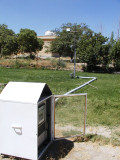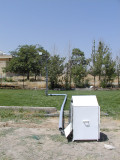For over a century, Climatology has officially been recognized as a science and has been studying the physical (temperature, humidity, cloudiness, wind direction and speed, earth and sun radiation, and so on), dynamic, and synoptic attributes of the atmosphere. In order to conduct these studies, we first need to measure the climatic data and thereafter study different atmospheric conditions. Therefore, standard weather stations have been established in order to measure these parameters and harmonize the data collected from different regions around the world. There are various types of weather stations, which are categorized according to their functions. The categorization of weather stations includes synoptic, climatology, precipitation measurement, agricultural climatology, upper-air, and marine stations. The information gathered from each of these stations can be used for various purposes.
Climatology is a science which is instrumental in other sciences, and much of the planning and design made in the fields of industry, transportation, construction, agriculture, and so on is concerned with the climatic attributes of each region.
Agriculture is among the fields which is greatly affected by weather conditions, and any change in the climate of a region can have major effects on plant growth. Therefore, it is of utmost importance for agriculture to take weather conditions into account.
Tomake accurate measurements andto educate students, a weather station has been established at the Faculty of Agriculture, Ferdowsi University of Mashhad. This station is one of the official stations of the Meteorological Organization; it measures and records various climatic parameters (wet-bulb and dry-bulb temperatures, maximum and minimum temperatures, deep soil temperature, humidity, evaporation, wind direction and speed, longwave and shortwave radiation) three times per day. This information is sent to the data-processing section of the Meteorological Organization and is used by researchers and graduate students. Moreover, undergraduate students passing their Climatology course and graduate students of Agricultural Climatology are familiarized with the station and its instruments first-hand and occasionally even gather data from the station themselves, which has a great impact on their education.
The instruments at the weather station of the Faculty of Agriculture include the following:
Temperature: minimum and maximum thermometer, wet-bulb and dry-bulb thermometers, thermograph, soil thermometer at various heights
It should be noted that the wet-bulb and dry-bulb thermometersare used to measure humidity.
Sundial: sunshine recorder
Radiation: actinograph
Humidity: maximum, minimum humidity (hygrograph)
Wind direction and speed: at 10m high
Precipitation rate:
Evaporation rate: using an evaporation pan containinga class A evaporation pan and an anemometer at the top of the evaporation pan.




